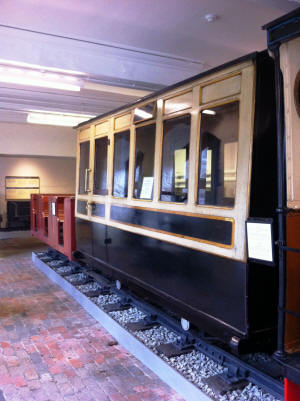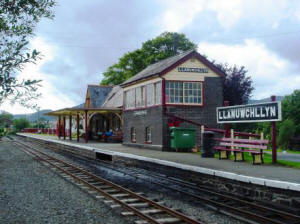 Rheilffordd Llyn Tegid (Bala Lake Railway) is the home of the Quarry Hunslet locomotive and the Heritage Railway Association ‘Best Small Railway of 2012’. Running alongside the stunning Llyn Tegid (Bala Lake) the Railway occupies the trackbed of the former standard-gauge Ruabon to Barmouth line of the Great Western Railway. Although there have been considerable changes, adapting the site to a narrow gauge railway, the character of the original standard gauge station buildings and signal box buildings remain.
Rheilffordd Llyn Tegid (Bala Lake Railway) is the home of the Quarry Hunslet locomotive and the Heritage Railway Association ‘Best Small Railway of 2012’. Running alongside the stunning Llyn Tegid (Bala Lake) the Railway occupies the trackbed of the former standard-gauge Ruabon to Barmouth line of the Great Western Railway. Although there have been considerable changes, adapting the site to a narrow gauge railway, the character of the original standard gauge station buildings and signal box buildings remain.
Today our line runs from our base in the peaceful village of Llanuwchllyn, just off the A494, to the outskirts of the market town of Bala 4½ miles away. Llanuwchllyn Station has plenty of car parking, including for coaches, and of course a café/gift shop to welcome you. The smaller scale of the railway's operation, of the old buildings and locomotives means the railway has all the charm of the old fashioned narrow gauge railway, and it remains a place where the staff and volunteers have time to deal with passengers on an almost individual basis. Every effort is made to ensure visitors are made welcome, and where possible visitors are allowed to visit the signal box and loco shed/workshop.
History of the Bala Lake Railway
 The current Bala Lake Railway is built on a section of the former standard-gauge GWR Ruabon - Barmouth Junction route. At the core of that route is the railway between Bala and Dolgellau, which was built by the Bala and Dolgelley Railway Company (they used the English spelling for the latter place), and opened in August 1868.
The current Bala Lake Railway is built on a section of the former standard-gauge GWR Ruabon - Barmouth Junction route. At the core of that route is the railway between Bala and Dolgellau, which was built by the Bala and Dolgelley Railway Company (they used the English spelling for the latter place), and opened in August 1868.
The line joined the Corwen & Bala Railway at Bala Junction and with the Cambrian Railways at Dolgellau. The line was operated by the Great Western (GWR), which later absorbed it in 1877. In 1896 the GWR enlarged Llanuwchllyn station, with an extended building and a new signal box. A long passing loop and second platform were also added.
Passenger services through Bala ceased on Monday 18th January 1965 and the line from Llangollen to Barmouth was closed. Although originally earmarked for dieselisation by the Western Region of British Railways in the early 1960s, the Ruabon to Bala/Barmouth line was eventually included in the infamous Beeching Report in 1963. From that time, the line was gradually run down, with the long distance holiday trains and through freight traffic being diverted to the Cambrian main line through Welshpool and other facilities rationalised. Goods traffic finally ceased running 1st January 1968, when the Pontcysyllte branch was closed. However, through rail services had effectively ceased December 1964 when the last Mail Train from Chester used the line.
Bala Lake Railway
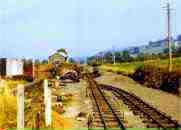 The rebirth of the line as a narrow gauge railway came when a local engineer, George Barnes, saw the potential of the lakeside section for both local and tourist traffic. With the help of the late Tom Jones CBE, then Chairman of Merioneth County Council's Finance Committee. The new company, Rheilffordd Llyn Tegid Ltd (Bala Lake Railway Ltd) became the first company to be registered in the Welsh language with operations beginning in 1972.
The rebirth of the line as a narrow gauge railway came when a local engineer, George Barnes, saw the potential of the lakeside section for both local and tourist traffic. With the help of the late Tom Jones CBE, then Chairman of Merioneth County Council's Finance Committee. The new company, Rheilffordd Llyn Tegid Ltd (Bala Lake Railway Ltd) became the first company to be registered in the Welsh language with operations beginning in 1972.
George and Tom with help from local ex-BR staff started to rebuild to a gauge of 1' 11 5/8" (600mm). The aim was to make use of the mass of equipment that had become available from numerous slate quarries in North Wales that had abandoned steam and railway operations in favour of machines and road transport. The first train consisted of two specially made open carriages and a small industrial diesel. From these humble beginnings the line and rolling stock collection grew to what we have today.
Hunslet Heritage

Situated as we are in close proximity to the old slate quarries at Penryhn and Dinorwic, our line celebrates the heritage of the wonderful little railways that used to work those quarries and transport the slate to the docks and ultimately the rest of the World. Our steam locomotives are all ex-quarry engines, well over 100 years old, and all but one worked the Dinorwic slate quarry at Llanberis. Check out the locomotives page for a more in-depth history of each engine. In addition to these historic locomotives we have a growing collection of heritage rolling stock, carriages and slate wagons, that bring this lost world of a once huge industry back to life.
Stunning Views
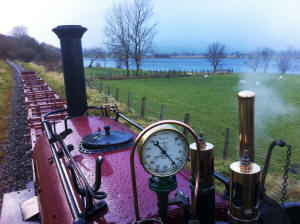
From Llanuwchllyn the line descends to almost lake level and is never far from the lakeside. The train ride gives excellent views of the lake amid its surrounding pastoral and woodland scenery, and of the nearby mountains, Arenig Fawr, Aran Benllyn and Aran Fawddwy.
Picnic sites at Llangower provide the perfect spot for a break in the journey on a summer's day. From here short walks along the foreshore will provide stunning views over and along the lake. At the Bala terminus a short walk into the town for the shops and cafes will provide entertainment for the more active passenger.
Future Plans and Development
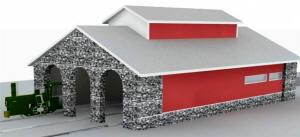
The Bala Lake Railway’s Forward Plan is an ambitious one! Building on its recent success, scooping ‘Best Small Railway 2012’ at the Heritage Railway Association awards, the Railway has a plan to regenerate the site, expand its range of exhibits and transform the visitor experience. The plans are certainly impressive: a new engine shed and visitor centre has been designed and work is ongoing to secure funding; rebuilding of the carriage shed; and an extension into the town of Bala itself.
 Aside from the unique restoration of ‘Winfred’ in partnership with the National Railway Museum and the return to steam of George B, the rolling stock collection will also be dramatically enhanced. On the heritage side we are already home to the yellow Dinorwic Slate Quarry four-wheel open quarry coach built in 1880 which is on loan to us from the National Trust.
Aside from the unique restoration of ‘Winfred’ in partnership with the National Railway Museum and the return to steam of George B, the rolling stock collection will also be dramatically enhanced. On the heritage side we are already home to the yellow Dinorwic Slate Quarry four-wheel open quarry coach built in 1880 which is on loan to us from the National Trust.
From the Moseley Railway Trust we have the remains of Penrhyn Railway Quarrymans Coach O, built in the 1880s, which will be rebuilt. A replica of Lord Penrhyn’s coach, the original of which can be seen in the Penrhyn Castle Museum (pictured below) is also under construction. Using Lord Penrhyn’s coach as a model, the Railway eventually hopes to provide new coaching stock, fit for the 21st Century whilst maintaining the charm of the 19th; just like the Railway itself.
